
Title: Experimental Knowledge Capture
Description: For this project, I (mis)use corporate knowledge transfer methods to make a portrait of my grandfather.
60-461/761: Experimental Capture
CMU School of Art / IDeATe, Spring 2020 • Profs. Golan Levin & Nica Ross

Title: Experimental Knowledge Capture
Description: For this project, I (mis)use corporate knowledge transfer methods to make a portrait of my grandfather.

For this project, I (mis)use corporate knowledge transfer methods to make a portrait of my grandfather.
Through it, I get an extremely weird, sometimes unsettling, and usually hilarious point of view on corporate culture.
I’m also able to impose some of my HCI education and push it into a space where it’s not “supposed to go.” I get to see how human-centered design principles (like interview techniques, concept mapping, etc.) hold up against the extremes of the hyper-logical and the hyper-personal.
(In all seriousness) I have one grandparent left, and we’ve gotten closer over the last few years. He expresses some regret over not having been an active part of my childhood (thanks to living on opposite ends of the country). I want to help close this gap, find a way to capture his wisdom, and consider the knowledge-based “heirlooms” he might be passing down.
What do we do in the face of this problem? We turn to the experts. When you google “intergenerational knowledge transfer” or even “family knowledge transfer,” all I found was corporate knowledge transfer methods. What happens if I apply these methods to my family as if it were an organization?
———————-
Method derived from: Ermine, Jean-Louis. (2010). Knowledge Crash and Knowledge Management. International journal of knowledge and systems science (IJKSS). 1. 10.4018/jkss.2010100105.
password: excap20
First, identify the Knowledge Capital. One day, I called my grandpa and gathered a list of every single thing he had done that day.
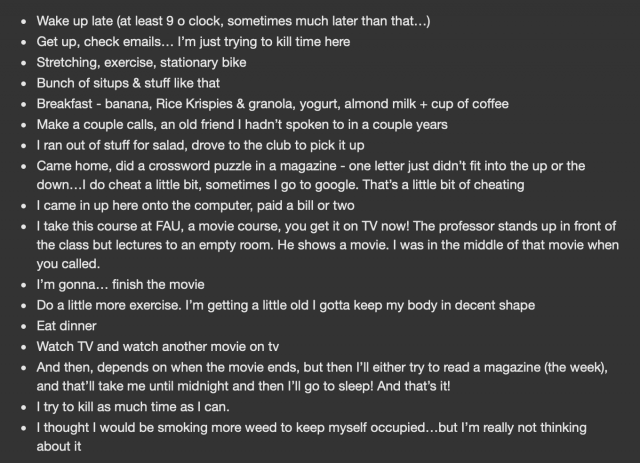
Next, perform an “audit” to identify the knowledge domains that are most critical, by using the following metrics:

My table (full version here):
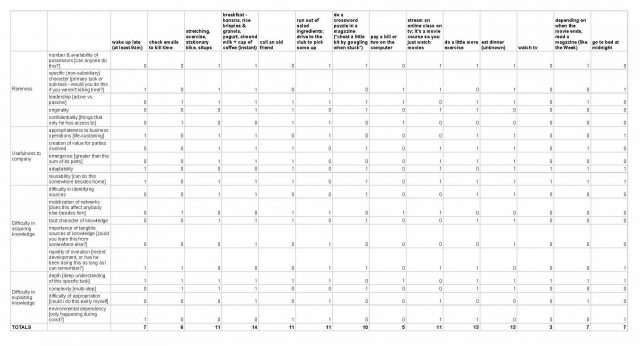
The results show that making breakfast is the most critical knowledge domain (with a high score of 14). I’m not surprised at all. It’s an incredibly specific ritual for him – he has been making the same bowl of cereal, 7 days a week, for at least 30 years. It’s in my earliest memories of him (even when he was visiting us in Colorado, we would make sure we had all the ingredients on hand). It’s interesting that the “knowledge audit” managed to capture the salience of this task as well.
Now that I know the most important knowledge, I convert the tacit knowledge of how to do it into explicit terms. Or, in other words,
“collect this important knowledge in an explicit form to obtain a ‘knowledge corpus’ that is structured and tangible, which shall be the essential resource of any knowledge transfer device. This is called ‘capitalisation,’ as it puts a part of the Knowledge Capital, which was up to now invisible, into a tangible form.”
As a fun aside, the last line there is essentially the business-speak definition of “experimental capture” – bringing something that was invisible into tangible form.
To “capitalize the knowledge capital” (not a joke – this is what it’s actually called), the literature calls for the use of “graphical models,” and give several examples such as the phenomena model, activity model, concept model, task model, and history model.
Before making the model, it’s important to interview the stakeholders. I relied on interview techniques from my research background, as well as some inspiration from Rachel Strickland’s Portable Portraits, and conducted a contextual inquiry over FaceTime where I asked my grandpa to walk me through making breakfast in excruciating detail. (Arguably the hardest part of this whole capture was remotely helping a 89-year old figure out how to flip the camera view 🙂 ).
Next, as I am the knowledge corpus (literally), I needed to convert the tacit knowledge I had learned into an explicit model. I chose to make a concept map.
Concept maps appear not only in the KM literature but also in my HCI curriculum. Each field has a slightly different definition, but overall, concept maps are meant to be highly structured & methodical to articulate a user’s mental model in a specific situation. Each element in the map must be a noun, and every arrow must be a verb.
Counterintuitively, it’s the constraints that allow strong stories to emerge. We are taught this in HCI, and I am really taking that and pushing it to the limit here. To what extent can I tell a hyper-personal story within the strict constraints of a concept map?
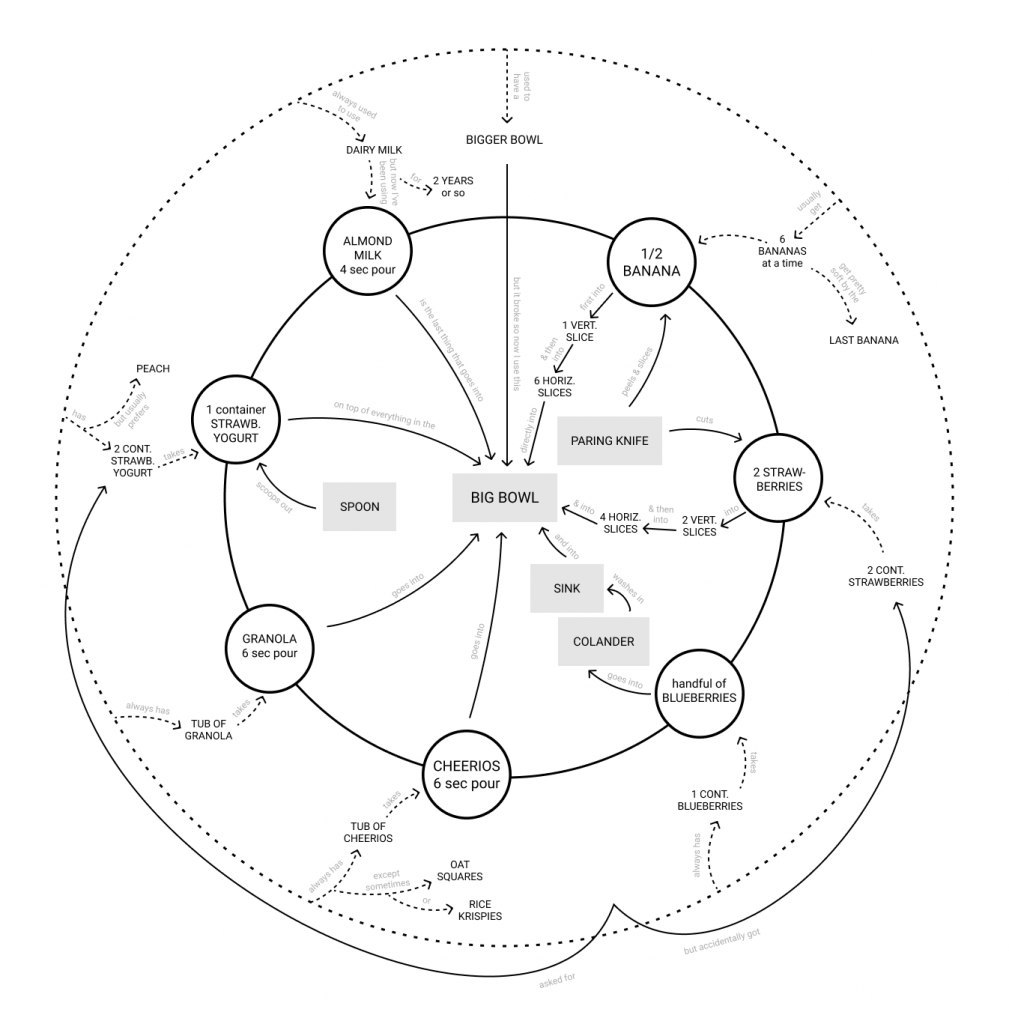
I completed a capture for one specific task. The next step would be to repeat this capturing-and-modeling process for a whole series of critical knowledge domains. With all the models together, the organization goes on to create a “Knowledge Book” (or “Knowledge Portal” if it’s online) where it can be disseminated to new employees.
Beyond having some fun with corporate literature, using (or mis-using) these highly structured tools are an opportunity for me to critique my academic background. I don’t get a lot of opportunities to do this, so I loved being able to push up on the edge of user research tactics in ways that would probably not fly in my career.
I often struggle to position myself within my field and feel generally suspended between art, design, and tech. This project was not incredibly profound or anything, but it was a way of placing myself directly between two emotional extremes and sort of navigating that ambiguous space, all within the nice constraints of a single quotidian task.
Some “making of” content:
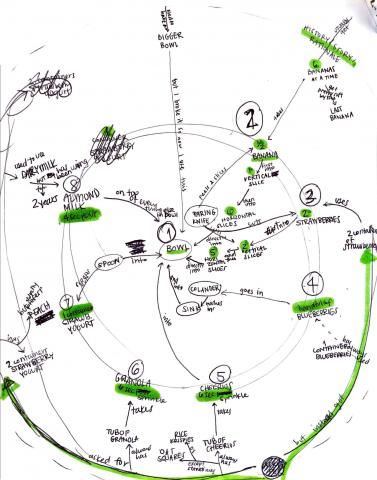
Using corporate knowledge transfer methods to make a portrait of my grandfather
Background: (in all seriousness) I have one grandparent left, and we’ve been getting closer over the last few years. He expresses a sort of regret over not having been an active part of my childhood (thanks to living on opposite ends of the country). I want to help close this gap, find a way to capture his wisdom, and consider the knowledge-based “heirlooms” he might be passing down.
What do we do in the face of this problem? We turn to the experts. When you google “intergenerational knowledge transfer” or even “family knowledge transfer,” all you get is corporate knowledge transfer methods. What happens if I apply these methods to my family as if it were an organization? Going down this rabbit hole makes for a super weird and fun project.
Intro:
Method derived from: Ermine, Jean-Louis. (2010). Knowledge Crash and Knowledge Management. International journal of knowledge and systems science (IJKSS). 1. 10.4018/jkss.2010100105.
The Method: 3 phases

“collect this important knowledge in an explicit form to obtain a ‘knowledge corpus’ that is structured and tangible, which shall be the essential resource of any knowledge transfer device. This is called ‘capitalisation’, as it puts a part of the Knowledge Capital, which was up to now invisible, into a tangible form.”
As a fun aside, the last line there is essentially the corporate-speak definition of “experimental capture.” 🙂 To do this, I’ll be drawing on interview techniques from Rachel Strickland’s Portable Portraits, as well as some “Knowledge Modeling” techniques from the corporate article, such as the “phenomena model,” “concept model,” and “history model.”
Ta-da! I have created a kind of fucked up heirloom.
For the remainder of the semester, I’m working on a project about communication between generations.
Since the launch of the Person in Time project, I’ve been thinking about capturing something about my elders – specifically my grandfather. We’ve always lived on opposite sides of the country, and in the last couple years, he’s expressed a sort-of regret over not having been as active a presence in my life (we’ve also gotten quite a bit closer, so that might show some contrast to how things were when I was a kid).
I will have more to share about the research – but I want to post this for now! Sorry for the delay.
The readings about poor images reminded me of a project by Matthias Brown (@traceloops on Instagram), in which he finds photos (of people he does not know) that all have the same generic filename, and then paints them, transforming them from forgotten digital artifacts to permanent, deliberate works of art.
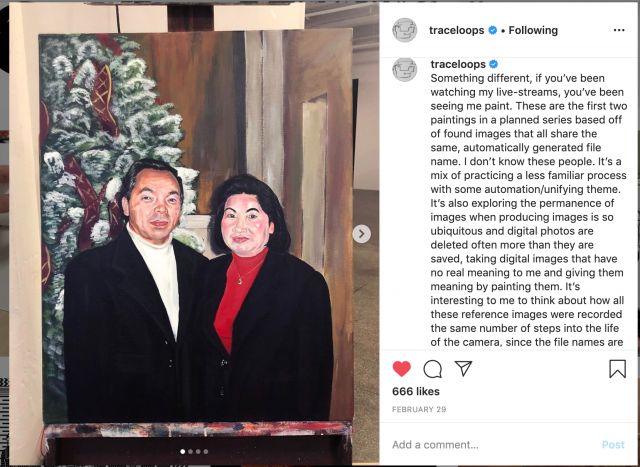
I realized I could do a similar thing for myself via my iMessages archive.
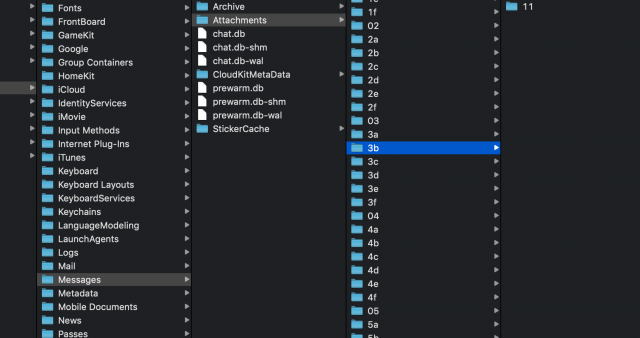
These are the photos no one ever saved. Each of the subfolders seems to be labeled with a number between 0 and 13. I chose to look at all the folders labeled “9.” (I’m choosing 9 randomly).
In these folders, there’s absolutely no organization whatsoever. a photo from 2014 will be next to a photo from 2020. All from different times of day. There’s no context besides the date and time, and no way to know who I was talking to, or whether this is a photo I sent or received.
I think this is so awesome.
Usually, when I go through my camera roll, filled with photos I’ve deliberately taken and saved, I can pick out a random one and after a couple seconds of thinking, say “ah yes” and remember what that picture was about.
The photos in the messages archive, however, precisely fit my understanding of “poor images.” They were never saved to a camera roll; they are forgotten images. Now devoid of context, their stories are a complete mystery. Did I send this? Did I receive this? What was the conversation we were having around this picture? They are silly, scary, dark, intimate. Some bring back memories of my sort of “past-selves” – an ex’s kitchen; the bathroom in a place I used to live.
I am so obsessed with these, and I spent WAY too many hours digging through this archive…I would love to continue this project in some way. For now, here is a small collection of photos I didn’t take. Some of the scenes are more familiar than others; but what stands out is I was not the photographer – yet I am somehow the owner. This is a crazy thing to think about – what are the ethics around this in the digital age?!

I chose to play with the photogrammetry app display.land.
To think about ways to misuse it, I checked out the tutorials for inspiration.
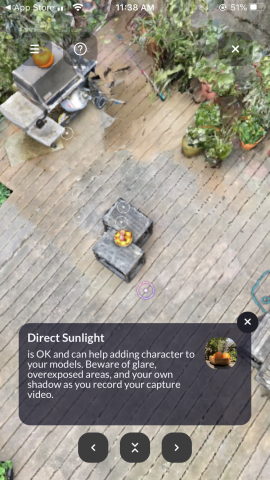
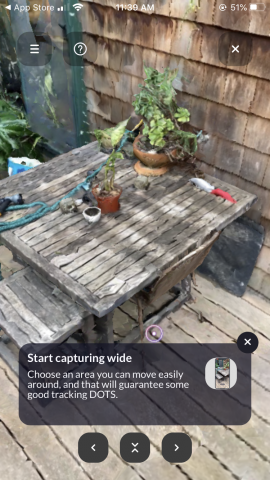
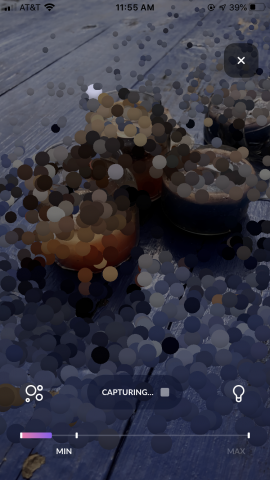
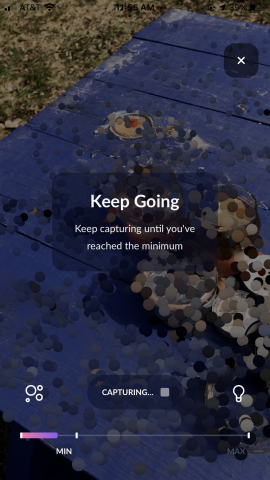
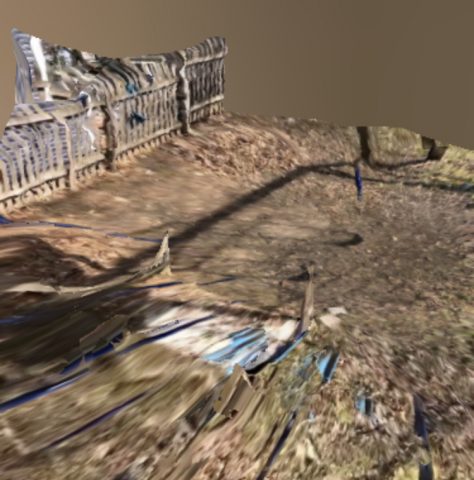

link to this one: https://displayland.app.link/p20yifoQa5
a photo of the actual chain:
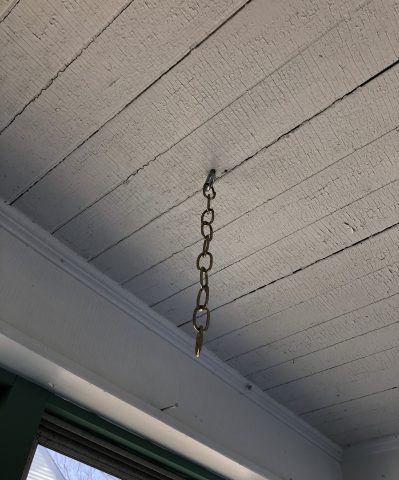
On Friday, I woke up to it absolutely pouring rain outside. By 8:30, it all suddenly cleared up, and I went out for a walk. There was an absurd amount of worms everywhere. I took pictures of them for about an hour (and was extremely careful where I stepped…)
To sort them:
Enjoy! (see if you can find the 2 bonus slugs). I will post the high-quality versions online somewhere…
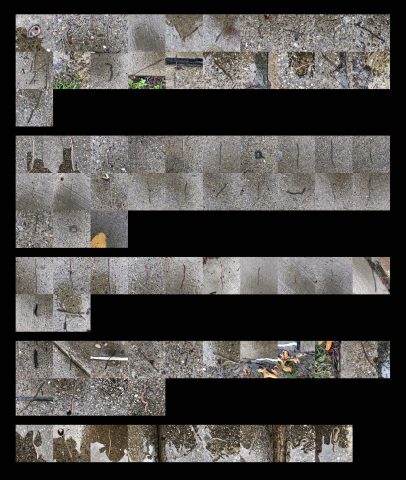

Make a gallery of the art in your parents’ boyfriend’s house.
I’m now in Burlington, VT, staying with my boyfriend and his roommates. It’s great & helpful to be able to spend this time with someone I love.
But we haven’t spent this much time together in a long time, and it’s weird and new and challenging to say the least.
All the art in his house is slightly crooked (lol). We got a good laugh out of that the other day, and decided that it felt like a Wes Anderson movie or something, where all the decor is just slightly off. There’s a vase on the mantle, but it’s empty. There are a couple plants, but they’ve definitely been neglected. It’s kind of cozy, but kind of incomplete; kind of home-y, but kind of unsettling. It’s a good match for how I feel.
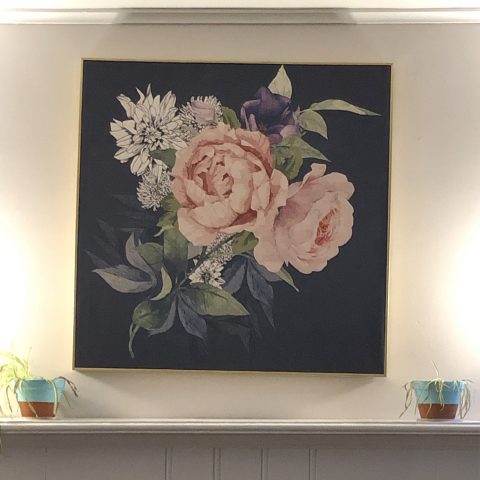
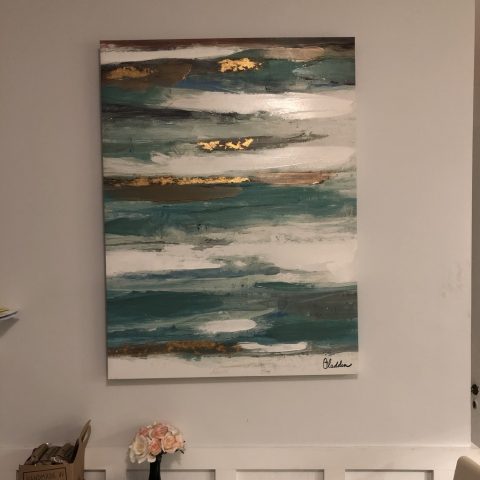
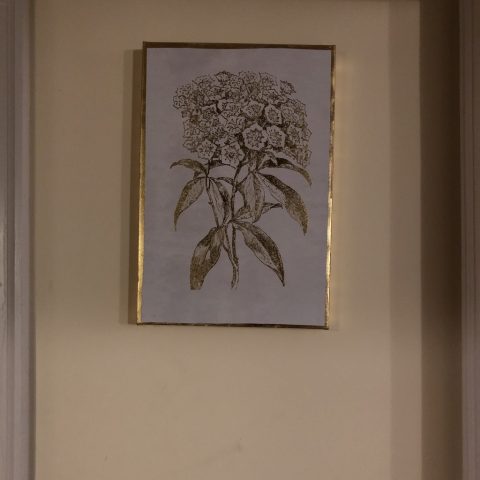
The exact moment we talked about taking an “IRL distortion portrait” during last week’s zoom call, I looked up and saw my reflection in the back of my roommate’s computer monitor.
She and I had crammed our workspaces together on a table way too small for the two of us – I assume many of you are having similar situations where you’re learning to share new spaces that you haven’t shared before.
The silver lining of me being up close and personal with her screen was this funhouse-style look.
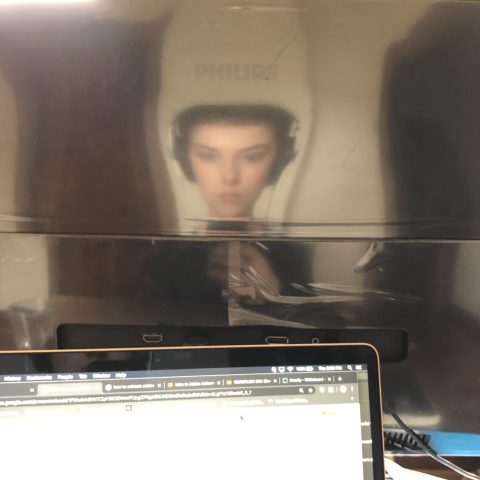
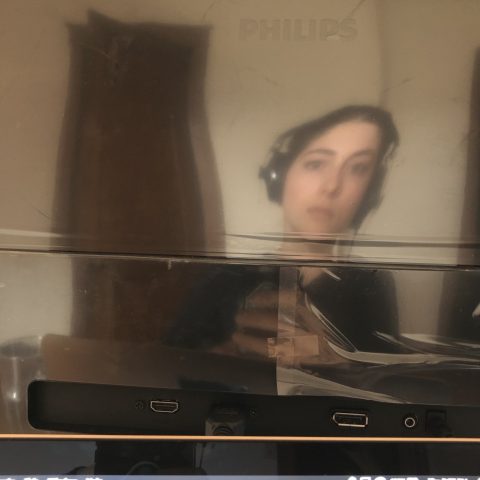
I’m pretty excited about this project and sort of in awe of the possibilities; I haven’t really gathered my thoughts enough to have fully fleshed-out ideas, but some areas of interest that have stuck with me:
Elder Wisdom/Intergenerational Communication

The Digital Grotesque
I’m also very interested in this concept of the digital grotesque, and am really drawn to artists using motion capture to distort the human form. Cool 3D World projects, copy/pasting parts of the human body (like adding an arm to a knee), the walk cycle projects, and animations of bodies sort of “melting” or being pulled through holes in the floor…all of these are super intriguing to me.
I don’t have a specific idea yet for this one, but I would love to learn how to work with motion capture and particles and distortions in general. (I remember Nica saying something about knowing how to do this…we should talk :))